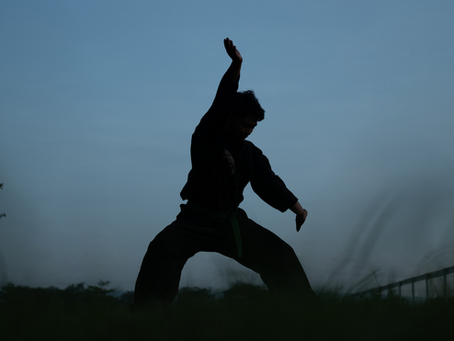Rise of the At-Risk Chinatown
(photos: police officer; Goddess of Democracy statue; Comfort Women statues)
In the 1970s, non-profits were empowering Chinatown residents to speak up. It was a crucial time. Self-Help for the Elderly, On Lok senior services, the Youth Services Center, and the Chinatown Community Development Center, still thriving today, mobilized and educated its citizens. The ensuing decades saw the end of the Chinese gangs as law enforcement stepped up with the Gang Task Force. When the gangs dissipated, thieves (not of Asian descent) from adjacent neighborhoods started attacking elderly grandmothers also referred to as “walking ATMS.” Thugs would follow an old woman exiting from a bank and demand the cash from her purse. The San Francisco Police Department intervened and wisely added a few bilingual Chinese officers on the force. Over time, the SFPD built relationships and trust with the locals so they would not feel hesitant to report such crimes.
In the 1980s and until the close of the 20th century, this historic enclave would weather more trials. Newer and trendier Asian shopping centers around the Bay Area gave local Chinese fewer reasons to visit. The Loma Prieta earthquake of 1989 collapsed the Embarcadero freeway artery that spilled into the community. The loss of this central route made it horribly inconvenient for customers to drive into the neighborhood, so they went elsewhere. Various merchants reported plummeting sales of 30 to 50 percent and higher. To make matters worse, the popularity of the Internet meant that anything offered in a Chinatown souvenir shop could be purchased online.
Newspapers labelled the area no longer relevant, but Chinatown soldiered on. Restaurants changed hands. Children of elderly shop owners took the reins out of paternal obligation. Landlords, retirement-ready, sold Chinatown’s commercial and residential interests to the highest bidder. Although family associations, politicians, and non-profits chimed in with different plans on what to do next, one thing was certain: Chinatown had to change to survive.
In the next decade, Chinatown boldly asserted itself. Chinatown sculptures would take social-political stands. At Portsmouth Square, the torch-wielding Goddess of Democracy looks oddly familiar. Dedicated in 1994, the bronze replica is based on the statue created during the 1989 Tiananmen Square student protest in China. At St. Mary’s Square, the Comfort Women memorial shows three young women, representing the Philippines, Korea, and China, holding hands as an elderly Asian woman helplessly looks on. The statue honors the tens of thousands of women forced into sex slavery to serve the Japanese soldiers before and during WWII.
Rise of the At-Risk Chinatown
(photos: police officer; Goddess of Democracy statue; Comfort Women statues)
In the 1970s, non-profits were empowering Chinatown residents to speak up. It was a crucial time. Self-Help for the Elderly, On Lok senior services, the Youth Services Center, and the Chinatown Community Development Center, still thriving today, mobilized and educated its citizens. The ensuing decades saw the end of the Chinese gangs as law enforcement stepped up with the Gang Task Force. When the gangs dissipated, thieves (not of Asian descent) from adjacent neighborhoods started attacking elderly grandmothers also referred to as “walking ATMS.” Thugs would follow an old woman exiting from a bank and demand the cash from her purse. The San Francisco Police Department intervened and wisely added a few bilingual Chinese officers on the force. Over time, the SFPD built relationships and trust with the locals so they would not feel hesitant to report such crimes.
In the 1980s and until the close of the 20th century, this historic enclave would weather more trials. Newer and trendier Asian shopping centers around the Bay Area gave local Chinese fewer reasons to visit. The Loma Prieta earthquake of 1989 collapsed the Embarcadero freeway artery that spilled into the community. The loss of this central route made it horribly inconvenient for customers to drive into the neighborhood, so they went elsewhere. Various merchants reported plummeting sales of 30 to 50 percent and higher. To make matters worse, the popularity of the Internet meant that anything offered in a Chinatown souvenir shop could be purchased online.
Newspapers labelled the area no longer relevant, but Chinatown soldiered on. Restaurants changed hands. Children of elderly shop owners took the reins out of paternal obligation. Landlords, retirement-ready, sold Chinatown’s commercial and residential interests to the highest bidder. Although family associations, politicians, and non-profits chimed in with different plans on what to do next, one thing was certain: Chinatown had to change to survive.
In the next decade, Chinatown boldly asserted itself. Chinatown sculptures would take social-political stands. At Portsmouth Square, the torch-wielding Goddess of Democracy looks oddly familiar. Dedicated in 1994, the bronze replica is based on the statue created during the 1989 Tiananmen Square student protest in China. At St. Mary’s Square, the Comfort Women memorial shows three young women, representing the Philippines, Korea, and China, holding hands as an elderly Asian woman helplessly looks on. The statue honors the tens of thousands of women forced into sex slavery to serve the Japanese soldiers before and during WWII.
Rise of the American Born Chinese
(photos: Grant Avenue follies dancers; Sun Yat-sen statue)
Freely embracing American culture, Chinese entered the entertainment business. Chinese American nightclubs sprang up in Chinatown and on the outskirts with Chinese crooners whose voices reminded guests of Frank Sinatra. The most illustrious, the Forbidden City, boasted dancing and variety shows until the wee hours. Hollywood’s top stars, including comedian Bob Hope and movie star Ronald Reagan, flocked to see tuxedo-ed singers, costumed dancers, female impersonators, and comics who entertained in perfect English.
Shows mirrored the American stage and Silver Screen -- Larry Chan was billed as the Chinese Bing Crosby; dance team Dorothy Toy and Paul Wing were the equivalent of an Asian Fred Astaire and Ginger Rogers; Colleen Li Tei Ming sang Irish ballads. The Forbidden City was so popular that non-Chinese clamored to showcase their talents by taking on Chinese stage names. The glory days, from the 1930s to 1960s, delivered four decades of rare memories for artists and patrons.
Meanwhile, Chinese immigrants were keeping close tabs on their beloved homeland. Dr. Sun Yat-Sen, founder of the Kuomintang political party with a pro-democracy platform, won supporters in Chinatown. He was so revered that the Chinese in San Francisco and many other U.S. cities freely gave funds to his cause to overthrow ancient dynastic rule. In honor of the first president of the Republic of China and Dr. Sun Yat-Sen’s visit to San Francisco, businesses commissioned a statue of him in 1938, which still stands today in St. Mary’s Square on California Street.
Rise of the American Born Chinese
(photos: Grant Avenue follies dancers; Sun Yat-sen statue)
Freely embracing American culture, Chinese entered the entertainment business. Chinese American nightclubs sprang up in Chinatown and on the outskirts with Chinese crooners whose voices reminded guests of Frank Sinatra. The most illustrious, the Forbidden City, boasted dancing and variety shows until the wee hours. Hollywood’s top stars, including comedian Bob Hope and movie star Ronald Reagan, flocked to see tuxedo-ed singers, costumed dancers, female impersonators, and comics who entertained in perfect English.
Shows mirrored the American stage and Silver Screen -- Larry Chan was billed as the Chinese Bing Crosby; dance team Dorothy Toy and Paul Wing were the equivalent of an Asian Fred Astaire and Ginger Rogers; Colleen Li Tei Ming sang Irish ballads. The Forbidden City was so popular that non-Chinese clamored to showcase their talents by taking on Chinese stage names. The glory days, from the 1930s to 1960s, delivered four decades of rare memories for artists and patrons.
Meanwhile, Chinese immigrants were keeping close tabs on their beloved homeland. Dr. Sun Yat-Sen, founder of the Kuomintang political party with a pro-democracy platform, won supporters in Chinatown. He was so revered that the Chinese in San Francisco and many other U.S. cities freely gave funds to his cause to overthrow ancient dynastic rule. In honor of the first president of the Republic of China and Dr. Sun Yat-Sen’s visit to San Francisco, businesses commissioned a statue of him in 1938, which still stands today in St. Mary’s Square on California Street.



























